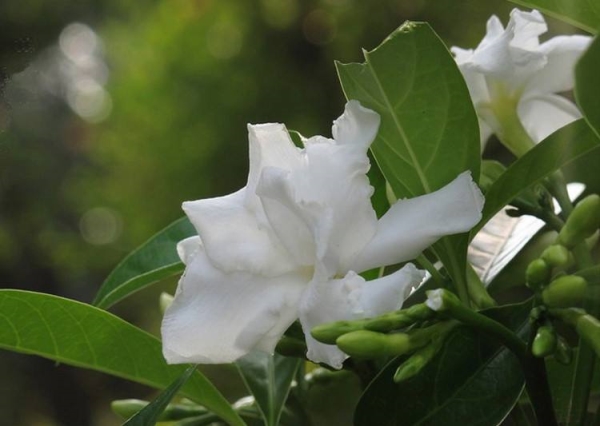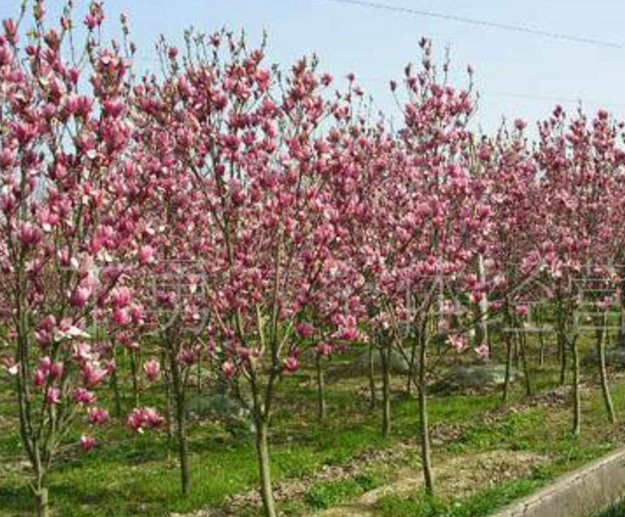How to raise Arrow feather Bamboo Taro
1. Fertile soil
If you want to make the arrow feather bamboo taro lush, the most important thing is a basin of fertile, loose and permeable soil. Only very breathable soil can make Arrow feather Taro grow faster. It is best to mix rotten leaf soil with peat soil and perlite at 5:3:2. In this way, the soil is not only loose and ventilated, but also has good fertility.

2. Appropriate amount of shading
An appropriate amount of shading is a very important problem. Although Arrow feather Taro likes to shine in the sun, it cannot withstand excessive light, especially the scorching sun in summer, which will make the leaves of the plant yellow, dehydrated, and even wither. At ordinary times, you must put the arrow feather taro in the indoor astigmatism environment.
3. Adequate watering
Arrow feather bamboo taro likes the moist growth environment, so it must be watered sufficiently when raising arrow feather bamboo taro. Especially in the hot and dry summer, keep a small amount of water every morning to moist the soil. Once every 2-3 days in spring and autumn, watering will be significantly reduced in winter, basically keep the soil slightly dry, water once every 7 days, do not appear stagnant water phenomenon.
4. Apply frequently and sparingly
Arrow feather bamboo taro fertilizer should not be too large, especially do not like thick fertilizer, if the fertilizer is too thick, there will be fertilizer damage. In breeding, we must apply fertilizer frequently and thinly. In spring, we apply fertilizer twice a month. The fertilizer is basically nitrogen fertilizer, and occasionally a little potash and phosphorus fertilizer can be applied. But nitrogen fertilizer will make the leaf markings of the plant more beautiful.
The above is the problem of how to raise the arrow feather taro. Let's take a look at how to reproduce the arrow feather taro.
The culture method of bamboo taro, how to raise bamboo taro? The culture method of bamboo taro, how to raise bamboo taro?
Taro is a perennial evergreen herb of the family Amorphophallus. Tropical rainforest region native to South America to Central America.
There are many varieties of bamboo taro horticulture, including dozens of common species and varieties, such as spotted leaf bamboo taro (also known as velvet bamboo taro), beautiful bamboo taro, peacock bamboo taro, rainbow bamboo taro (also known as rose taro), arrow feather bamboo taro and so on. Its horticultural varieties include two-color taro, white-veined taro,
Love bamboo taro, dense flower bamboo taro and so on. Become a big family of bamboo taro.
Morphological characteristics: the stem is erect, the plant height is 30-60 and the stem is fleshy. Leaves ovate or broadly lanceolate, varying from breed to breed. The petiole is long, the leaf is thin, the leaf surface is light green, grayish green and other colors, with gorgeous pinnate markings or irregular markings. The back of the leaf is often purplish red or grayish green, and the leaf margin is flat or wavy. Flowers often have light green bracts and are of low ornamental value.
The growth habit likes the environment of high temperature and humidity, the optimum growth temperature is 18: 30, dormant below 10:00, and the stems and leaves of some species are dry. If you like the light, it should be half-cloudy in summer. Loam is required to be loose, fertile, rich in humus and well drained.
The method of propagation is to propagate in separate plants, which is combined with turning the basin and changing soil every April to May every year. The mother plant was removed from the pot, the persistent soil was removed, and the overgrown plants were cut into clusters, and then planted immediately to strengthen watering management. When ramet, we should pay attention to protect the root system with soil.
Plant diseases and insect pests control bamboo taro grows in a poorly ventilated environment, which is often prone to scale insects and red spiders. When red spiders are found, 40% dimethoate emulsion 800-1000 times can be sprayed twice every other week. Scale insects should be applied in the nymph stage.
The posture of bamboo taro for horticultural use is graceful, and the leaf color is changeable. It is an important indoor shade-tolerant foliage plant. It is suitable for family indoor potted plant decoration to decorate the living room, study and bedroom. As long as there is enough scattered light indoors, it can grow normally and can be used for viewing all the year round. In the southern area, courtyard flowers and trees can be planted in the open field and semi-shade.
How to raise Kong Cui bamboo taro
Peacock bamboo taro leaves beautiful and colorful, strange markings, like a lifelike open-screen peacock, with a unique elegant demeanor, at first glance, is often mistaken for fake flowers. It is not only the most beautiful species of the same family, but also the most representative foliage plant in the world. Potted plants are embellished in the living room and study, with unique luster markings, so that the interior immediately shines.
Peacock taro, also known as zebra taro, is a perennial evergreen herb of the bamboo taro family. The dense clusters of plants are tall and straight. Petiole grows from rhizome, oval in shape, petiole purplish red, leaves thin leathery. The translucent leaves have different shades of green, and pear-shaped patches of different sizes are emitted from the midrib, similar to the tail feathers of peacocks, hence the name peacock bamboo taro.
Common cultivated varieties are dichromatic taro, arrow feather leaf taro, striped leaf taro. Peacock bamboo taro is native to South America and Brazil. It likes high temperature, high humidity and semi-shady environment, and is not resistant to cold. Loose and fertile soil is required.
Pot soil is required to be loose and fertile, well drained and rich in humus, which can be mixed with 6 parts of rotten leaf soil (or peat soil), 2 parts of garden soil and 2 parts of river sand.
It is neither resistant to high temperature nor cold, the suitable temperature for growth is 18-22 degrees and the overwintering temperature is 3-16 degrees. Winter should be placed in a sunny place, pay attention to cold, if less than 10 degrees below, leaves will curl up, less than 5 ^: vulnerable to cold injury, serious death of the whole plant.
Strong negative tolerance, outdoor culture, summer should be shaded, afraid of direct light, otherwise easy bow I leaf edge scorched. When raising the family, it can be placed in the bright indoor light in spring and autumn, move the flowerpot to the north window in summer, and then move the flowerpot to the south Chaoyang window in winter. If placed in dim light for a long time, the leaves will lose their unique luster.
Peacock taro is native to the tropical rain forest, which requires high air humidity and should be maintained at ordinary times.
70 "~ 80" air relative humidity, because the indoor environment air relative humidity most of the time
At about 50 ", therefore, maintaining the high humidity of the surrounding environment is the key to the successful cultivation of peacock taro. In summer, it is necessary to spray water on the leaves 2 or 3 times a day to humidify and cool down to facilitate growth. If the temperature is high and the humidity is low, or if you are exposed to the sun, you will be wilted and weak. On the contrary, if the temperature is low and the humidity is high, it will cause rotten leaves and roots. High temperature and high humidity are most conducive to its growth, and the temperature decreases, so the humidity should be reduced accordingly. Moisture should be strictly controlled after winter in order to survive the winter safely.
. Peacock taro is mainly to watch its beautiful leaf color, should be careful not to apply nitrogen fertilizer, otherwise the leaf markings will fade, and there are some bad phenomena, such as leaf thickening, petiole softness and so on.
It is mainly propagated by ramets, which should be divided in late spring and early summer, and at least 5 leaves should be retained for each sub-plant. Can also use rhizome cuttings, but also easy to root.
- Prev

Matters needing attention in breeding Bermuda
Bermudagrass has a great demand for nutrients. We need timely fertilization before its flowering, and it is appropriate to apply compound fertilizer and nitrogen fertilizer alternately, which is beneficial to its flowering and increase its flowering quantity.
- Next

Planting method of Magnolia
1, the choice of planting environment Magnolia like light, young trees are more resistant to shade, not resistant to strong light and western sun, too strong light or western sun, it is easy to burn trees. Magnolia can be planted in a side light-blocking environment, but it grows poorly under a big tree or in the shade, with thin trees, sparse branches, and small and yellowing leaves.
Related
- Fuxing push coffee new agricultural production and marketing class: lack of small-scale processing plants
- Jujube rice field leisure farm deep ploughing Yilan for five years to create a space for organic food and play
- Nongyu Farm-A trial of organic papaya for brave women with advanced technology
- Four points for attention in the prevention and control of diseases and insect pests of edible fungi
- How to add nutrient solution to Edible Fungi
- Is there any good way to control edible fungus mites?
- Open Inoculation Technology of Edible Fungi
- Is there any clever way to use fertilizer for edible fungus in winter?
- What agents are used to kill the pathogens of edible fungi in the mushroom shed?
- Rapid drying of Edible Fungi

